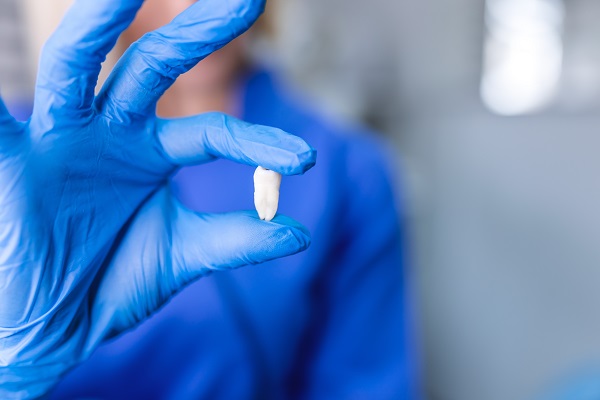Visit a Restorative Dentist for Missing Teeth

A restorative dentist is exactly who you need to talk to if you have missing teeth. Losing a tooth can be a worrisome experience as you realize your smile has been permanently changed. Fortunately, there are many missing tooth replacement options these days thanks to the countless dental innovations that have occurred in the past several decades.
You no longer have to replace your missing tooth with a horse or donkey’s tooth, as George Washington had to, or replace them with bones like the ancient Mayans did. Interestingly, the Mayans also used stones to replace teeth, which is not that far off from modern dentists using ceramics made out of clay.
How a restorative dentist replaces missing teeth
Restorative dentistry focuses on the repair of damaged teeth and the replacement of missing teeth to improve bite function and overall health. Restorative dentists are typically general dentists who focus on restorative dental treatments like the repair of decayed or damaged teeth and providing patients with missing teeth with replacement options.
Some of the treatment options a restorative dentist might recommend for patients who are missing teeth include:
1. Dentures
Dentures are an inexpensive way to replace missing teeth. The two main categories are partial and full dentures. The former is usually recommended when a patient is missing one or a few teeth, while full dentures are for people who have lost most of their teeth on a dental arch.
Dentures rest on the wearer’s gums and are kept in place by the suction forces they exert on the gums. Dentures are one of the most common ways to replace missing teeth, and patients can have their new teeth in as little as two weeks.
However, dentures come with annoying maintenance requirements like daily cleaning and soaking. This requires wearers to make changes to their daily routines. Dentures are also known for poor stability as they usually shift in the mouth when worn. They can be combined with dental implants for improved stability.
Traditional dentures are removable devices that patients insert, remove, and clean daily. Dentures combined with implants can be removable or fixed in place.
2. Dental bridges
Dental bridges are the second most affordable way to replace missing teeth, usually recommended for patients with a few missing teeth in a row. They typically have two main components: a row of artificial teeth called pontics, with crowns called abutments attached to them. These crowns are used to anchor down the artificial teeth to the two teeth closest to the space left by the missing teeth.
These teeth have to be prepared for the crowns by shaving enamel off their sides to create a snugger fit. It is an alteration that cannot be reversed in the future, meaning these teeth will always need crowns to protect them moving forward.
Also called caps, crowns are dental restorations that cover the visible part of teeth. They are shaped like real teeth and protect against bite forces. Tooth-colored crowns are typically used with bridges for optimal aesthetics.
Dental bridges provide excellent stability, and they do not need as much special maintenance as dentures. They can make it more challenging to floss teeth, but a water flosser solves that problem.
3. Dental implants
Implants are metal rods that replace missing teeth roots. Crowns are attached to them to replace the tooth’s visible part. Implants are the optimal way to replace missing teeth since they are the only teeth replacement options that prevent the bone tissue breakdown that goes on when teeth fall out.
This jawbone deterioration is caused by atrophy as dentures and bridges do not replace teeth roots. Implants replacing roots allow bite forces to be transferred into the jawbone, giving the tissues there all the stimulation they need.
Implants are also the closest thing to natural teeth since they do not require any special maintenance and feel natural. The crowns attached to them are virtually indistinguishable from real teeth. Implants are also designed to last a lifetime so most people never need to replace them. The biggest drawbacks of implants are them being the most expensive teeth replacement option and how long the process takes. It can take up to six months from the initial consultation to when patients get their permanent teeth attached to their implants.
4. Implant hybrids
Implants hybrids are becoming increasingly popular as a growing number of people look for cheaper alternatives that still provide the bone-preserving properties of implants. Implant-supported dentures and implant-supported bridges are the two most popular ways to combine implants with other teeth replacement options. This allows patients to enjoy the benefits of implants without needing to have each missing tooth replaced.
Explore options at our Kennewick clinic
Our restorative dentist can help you to choose the right teeth replacement option if you have lost one or more teeth. Give us a call or drop by our Kennewick clinic to set up an appointment.
Request an appointment here: https://www.gledhilldental.com or call Gledhill Dental at (509) 800-8410 for an appointment in our Kennewick office.
Check out what others are saying about our dental services on Yelp: Restorative Dentistry in Kennewick, WA.
Related Posts
As you age, your teeth face challenges from numerous issues. Daily wear from chewing food or stress-related grinding, gum problems from bacteria build-up, and tooth damage from the foods and drinks you consume all play a role in the deterioration of your smile.You and your dentist share a common goal: caring for and preserving your…
Need a restorative dentist? Do you have an awkward smile? Have you been told by friends and family that your teeth need some attention? If so, don't worry! Many dentists can help. One option is to see a dentist who offers restorative treatments. This type of dentistry will provide the best options for restoring your…
Unlike general dentistry, which focuses on routine examinations and treatment, restorative dentistry is a specialization focusing on the repair or replacement of damaged or missing teeth. Bruxism is a fairly common condition that causes the clenching and grinding of teeth. While no single cause exists for bruxism, the results of teeth grinding are well documented.…
Any dental work that is done to repair missing or damaged teeth are types of dental restorations, which can include anything from minor fillings to full implants. How long these restorations take depends entirely on what kind of work is necessary. Some procedures can be performed in a single short appointment, while others might be…


